Table of contents
Performance date: 27 juin 2017 - First performance
Documentation date: 20 juin 2017
Version state
Valid
Validation date: 15 juin 2018
Executions dates of this version
- 27 juin 2017,
Version documentalist
- lemouton (Serge.Lemouton@ircam.fr)
Version realisation
- Clément Marie (Sound engineer)
Other version(s)
Detailed staff
- 3 percussionnistes, piano
Electronic equipment list
Computer Music Equipment
-
1 MacBook Pro - Apple Laptops
(Apple)
-
1 iPad - Tablets
(Apple)
-
3 Coala - Embedded Audio Platform
(Ircam)
-
1 Max 7 - Max
(Cycling74)
32 bit -
1 Mira - Library
(Cycling74)
Audio Equipment
-
10 Hot Spots - Contact Microphones
(K&K Sounds)
-
1 Schertler Piano - Contact Microphones
(Schertler)
-
16 TEAX19c01-8 - Transducers
(Tectonic Elements)
Work related information
Premiere
- 27 juin 2017, France, Paris, Le Centquatre, Salle 400, dans le cadre du festival ManiFeste
Publisher :
- Suvini Zerboni
Realisation
- Serge Lemouton
Work length
- 19 mn
Useful links on Brahms
- Inside-out pour piano, trois percussionnistes et électronique (2016-2017), 19mn
- Carmine-Emanuele Cella
| File | Author(s) | Comment | |
|---|---|---|---|
| Download [66,7 Mio] | Technical rider technical rider | Clément Marie | |
| Download [7,3 Mio] | Patch max project | Serge Lemouton |
Instructions
The electroacoustic setup of Inside Out does not use any conventional loudspeaker system. Instead, seven percussion instruments and the piano bodies are put into vibration by small transducers.
The sound of these instruments is picked up thru piezo microphones.
The circulation of the sound from an instrument to the other is controlled and constantly modified by the max patch.
Three bass drums are augmented by Ircam Coala (v1) . Coalas are nano computer prototypes specifically designed to process the sound with very low latency to allow active control of the musical instruments vibrations.
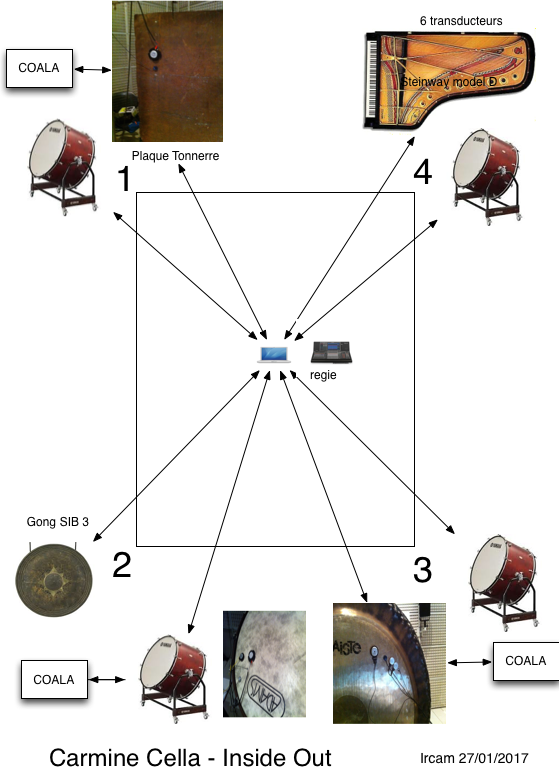
The transducers and piezo microphones are stuck on the instruments with Shertler “Application Putty” green paste :
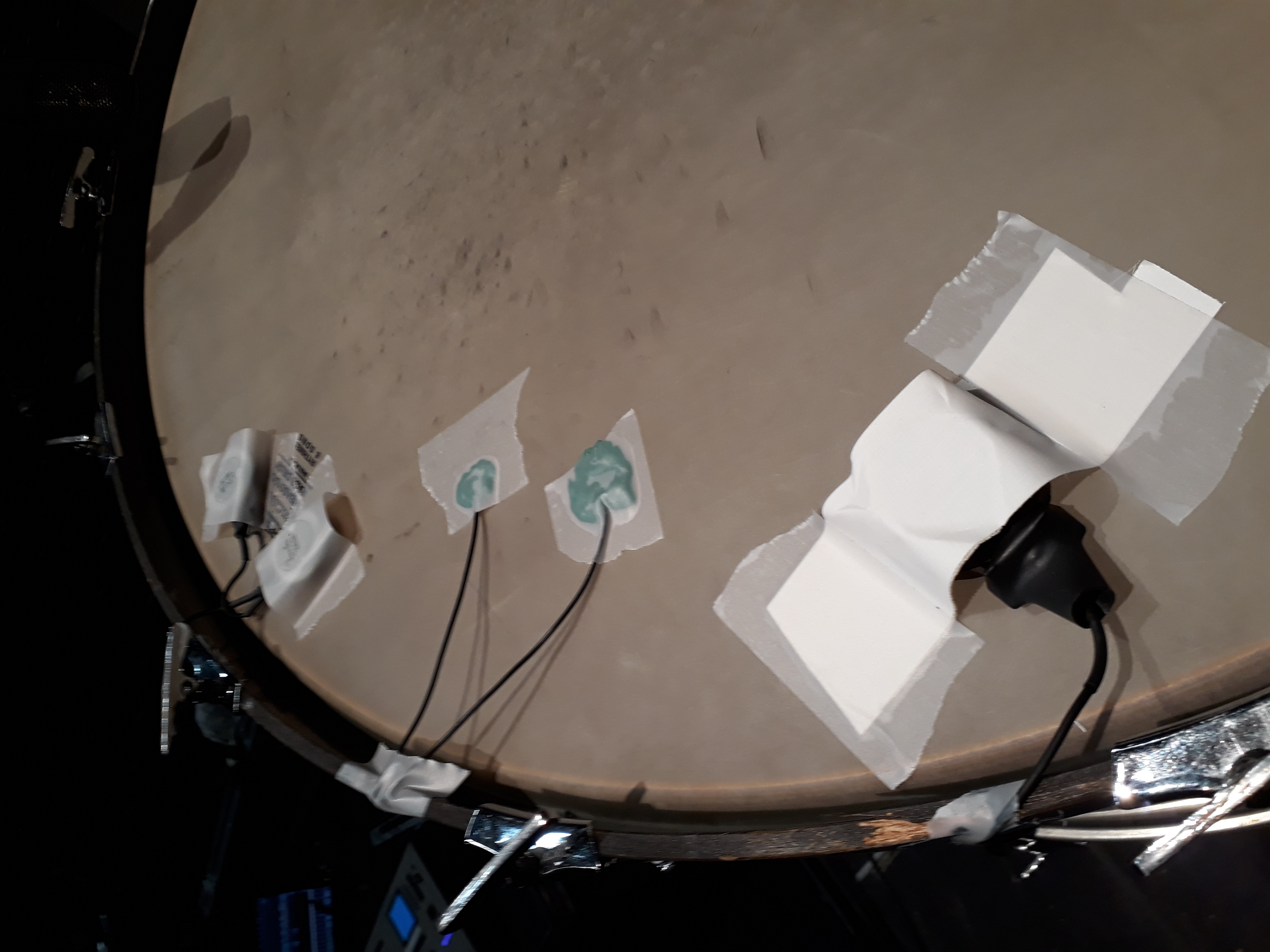
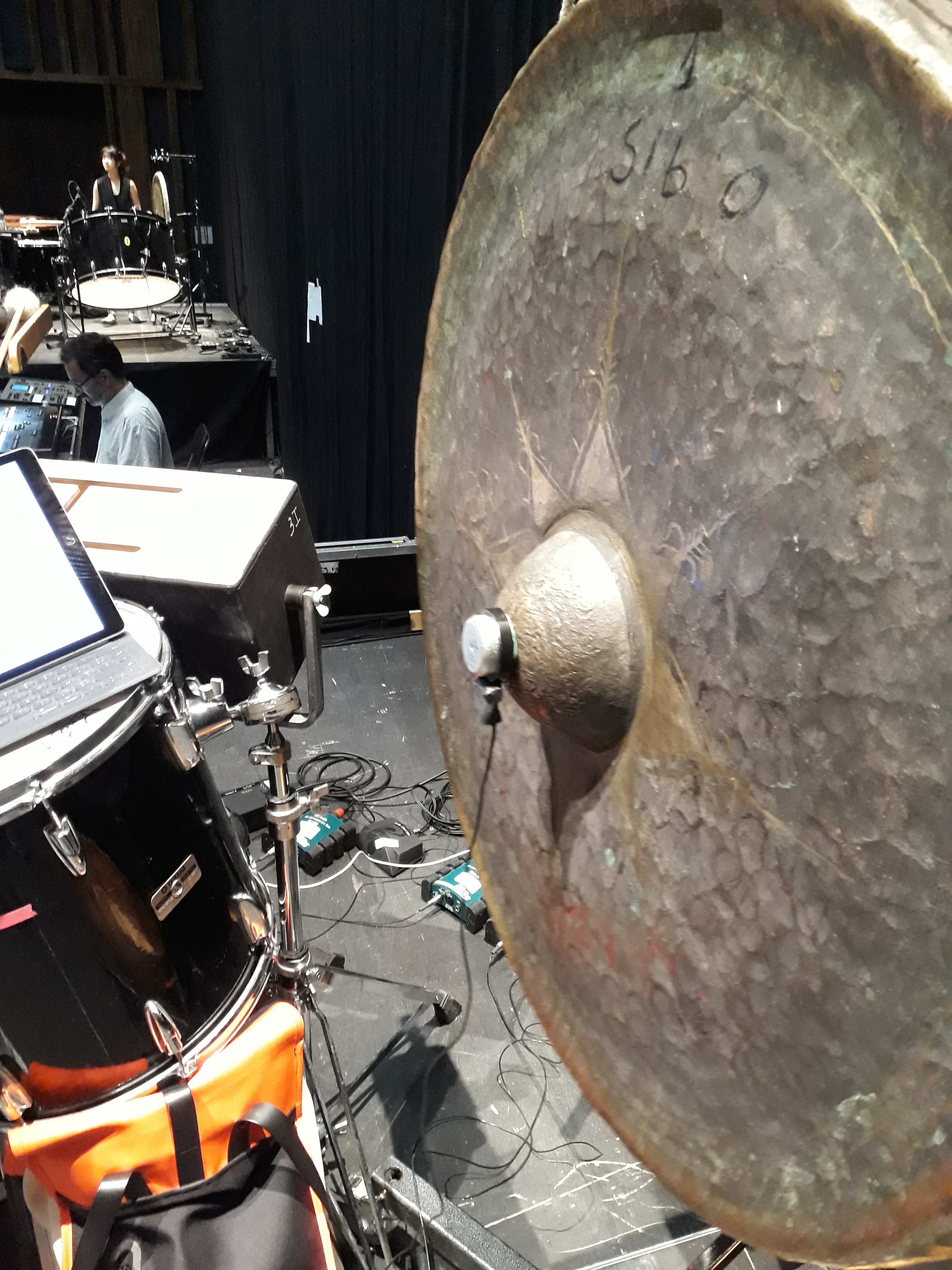
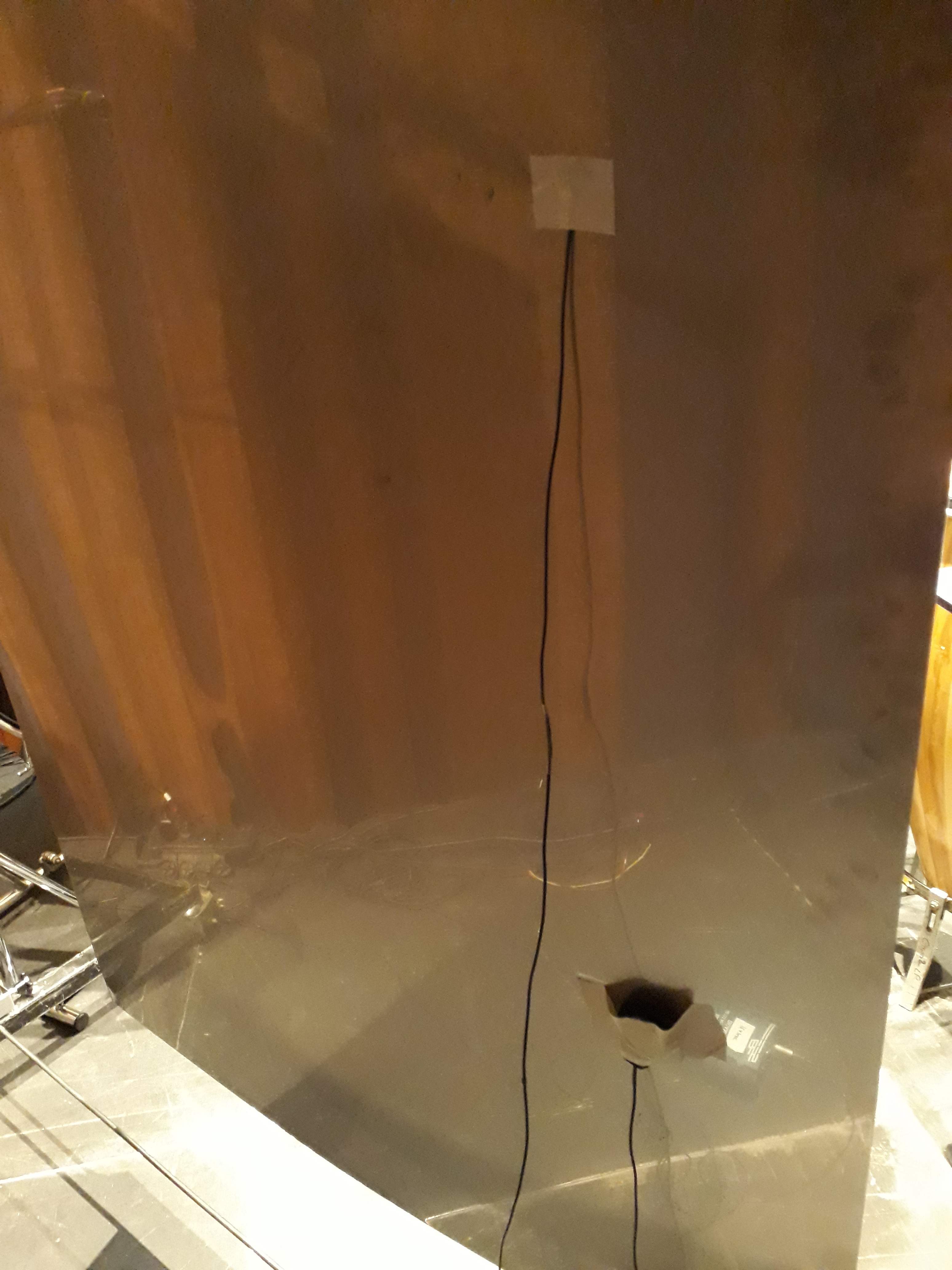
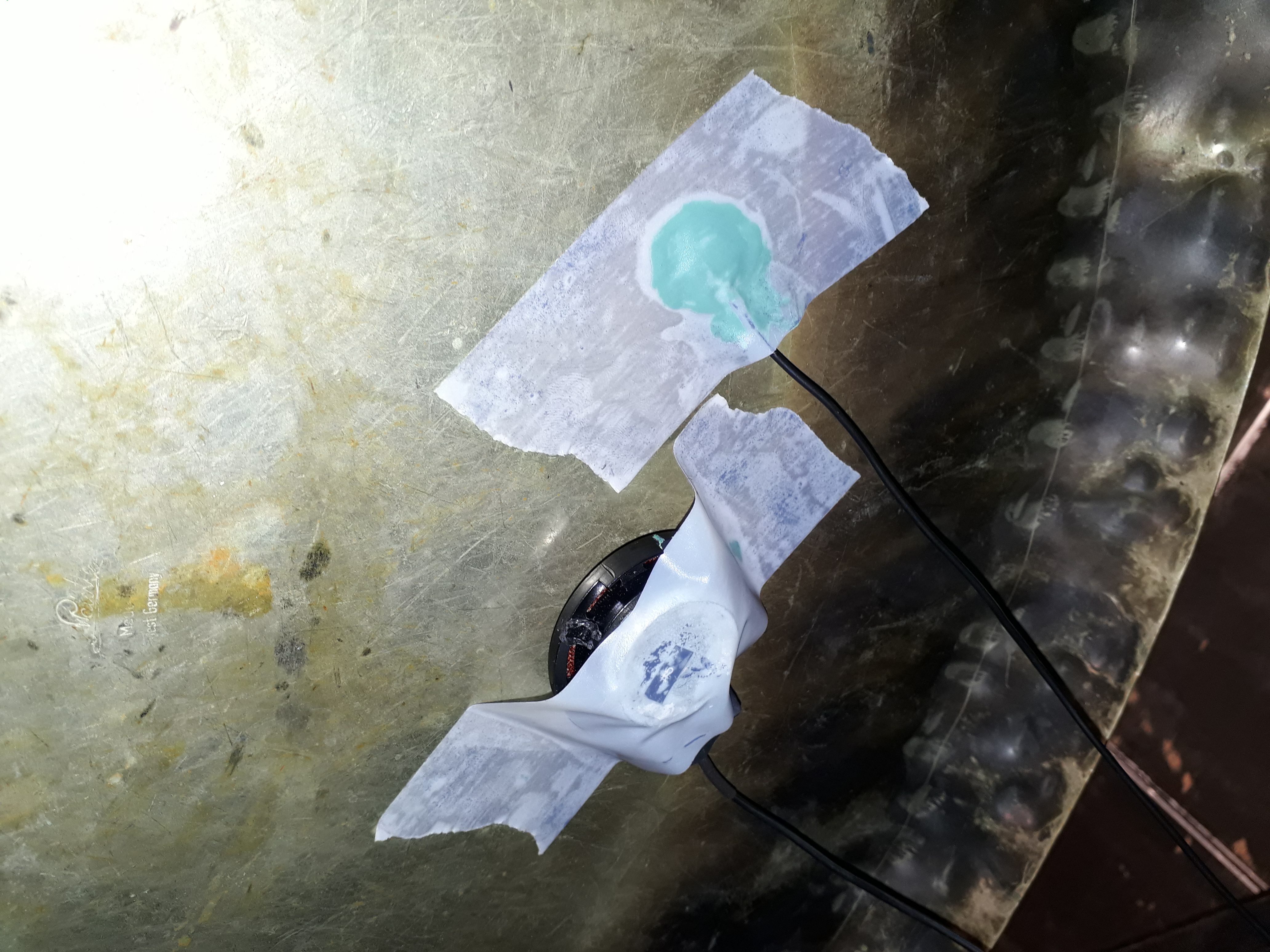
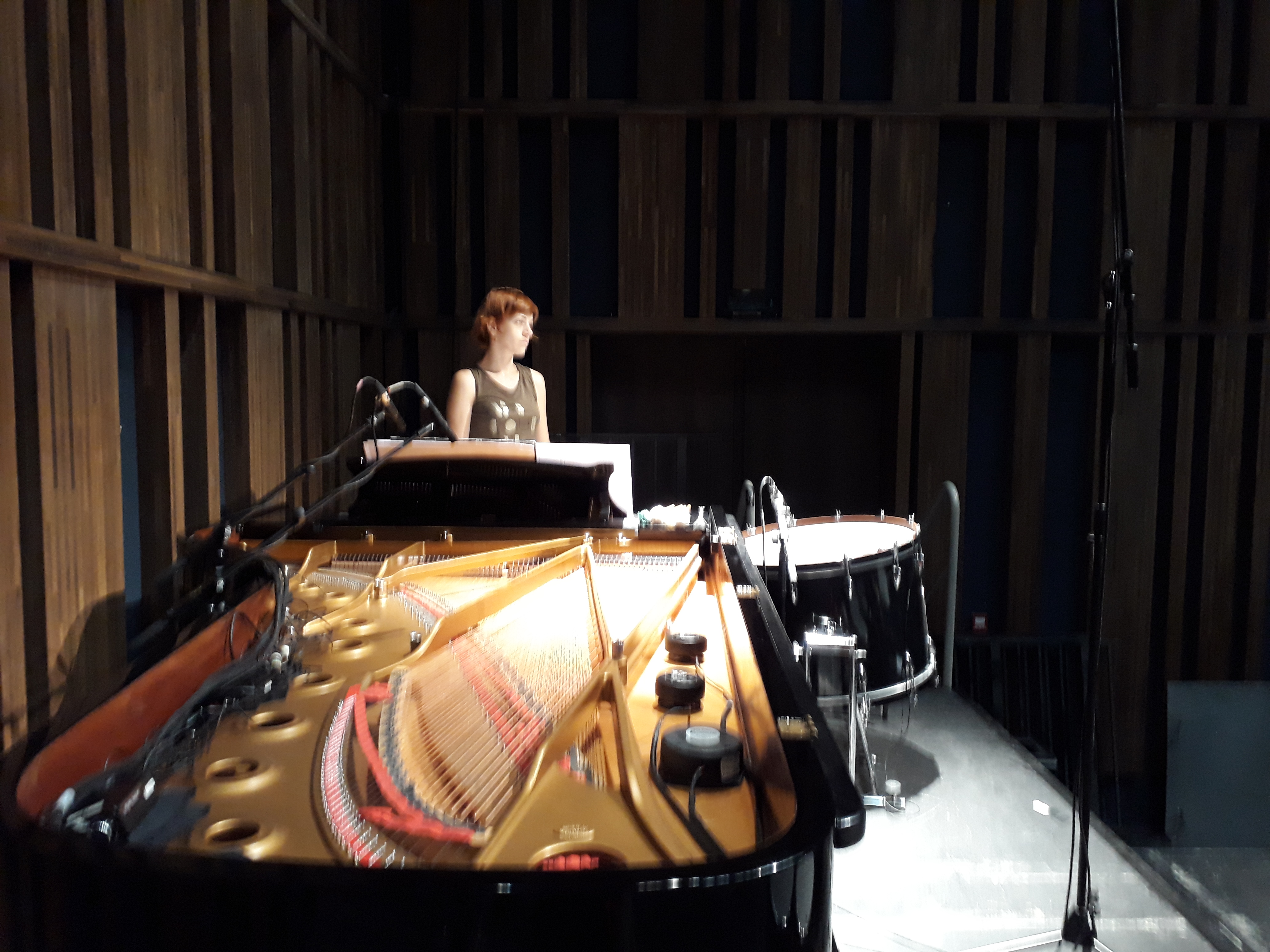
Adc/dacs routings
1. Thunder sheet
2. Bass Drum 1
3. Gong
4. Bass Drum 2
5. Tam
6. Bass Drum 3
7. Piano
8. Bass Drum 4
Check list
open the “inside_out_concert” project with max 7 in 32 bit mode
check max settings :
sampling rate = 48000
io vector size = 512
vector size = 512
overdrive on
scheduler not in audio interrupt
turn audio ON
connect the ipad on an adhoc network or via usb
launch mira on the ipad
Patch presentation
27 FX presets are recalled during the performance of the piece from the main max patch (where indicated in the score).
The main patch displays the graph of the sound energy circulating between the instruments.
For exemple, in FX 27, the sound path is :
Thunder Sheet (plaque) -> Tam -> Bass Drum 1 -> Gong -> Bass Drum 2 -> piano -> back to Thunder Sheet
creating a complex, indirect feedback loop (larsen effect).
Between each instrument, an effect can be inserted, here (in FX27) a “noiser” effect, consisting in a tuned resonating filter and a delay line.
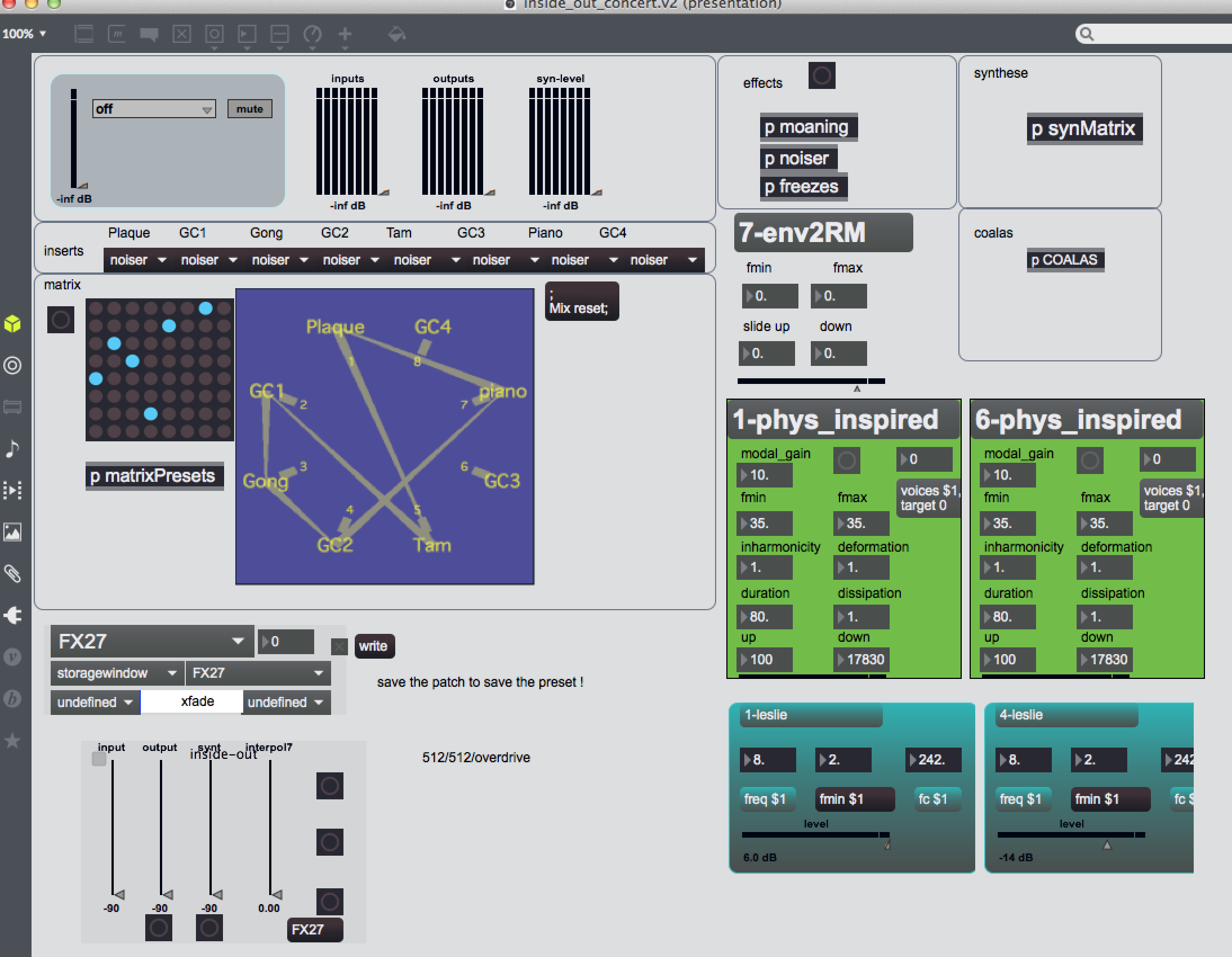
ipad interface
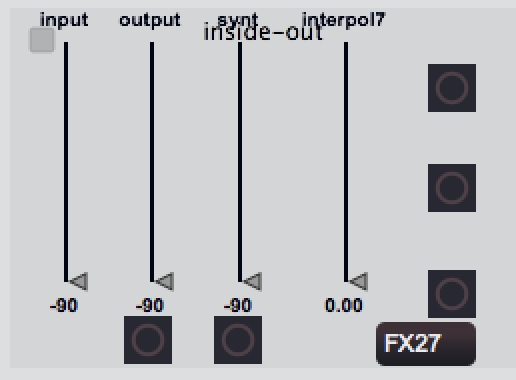
The ipad is used to :
recall the presets (the left and right buttons at the bottom recalls respectively the previous and the next scene)
interpolate between the current and the next event with the rightmost slider (when required : cf. score)
control the input levels from the K&K piezos
control the output levels from the main matrix
control the output level from the synthesis modules
the three buttons at the right are used to record and freeze the percussionists voices when they are the singing (cf. score)
© IRCAM

This documentation is licensed under a Creative Commons Attribution-NonCommercial-NoDerivatives 4.0 International License.
Program note
S’abstraire de l’écoulement. Ni passé, ni futur. Ne pas tenter de pressentir, de projeter, d’appréhender.
Écarter tout suffixe : savourer le présent.
Ici, maintenant – dans l’intimité d’un gigantesque instrument, au coeur de son espace acoustique : comme chez Morton Feldman ou Giacinto Scelsi, se laisser aller au son – un son fondamental, pour lui-même, pour sa présence palpable, physique, enveloppante.
Un piano, une grosse caisse, une grande plaque métallique, un gong gigantesque : chaque instrument est augmenté, c’est-à-dire capable, en plus des sons qu’il produit habituellement, de diffuser et de faire résonner des sons électroniques – capable, de surcroit, de « jouer » des autres instruments, en injectant son propre son dans le corps résonant des autres.
Ils sont placés chacun à une extrémité de la salle, loin les uns des autres, à différentes hauteurs, pour mieux immerger, saisir, figer le public dans sa gangue de son. Le son perd sa localisation, envahit l’espace tout entier.
Ainsi plongés dans le liquide sonore, on remonte doucement à la surface, on sort ses oreilles, aux aguets, pour replonger à nouveau. Dedans-audehors, Inside-out.
De cet omniprésent sonore émerge, dans une lenteur assumée, une voix. Se dégageant graduellement de toute connotation percussive, le son ambiant se fait vocal, prosodique.
Comme un rituel primordial, une prière venue du fond de ce temps suspendu.
Jérémie Szpirglas.
Note de programme du Concert du 27 juin 2017 au Centquatre, dans le cadre du festival ManiFeste.
Version documentation creation date: 20 juin 2017 07:55, update date: 24 mars 2021 15:01